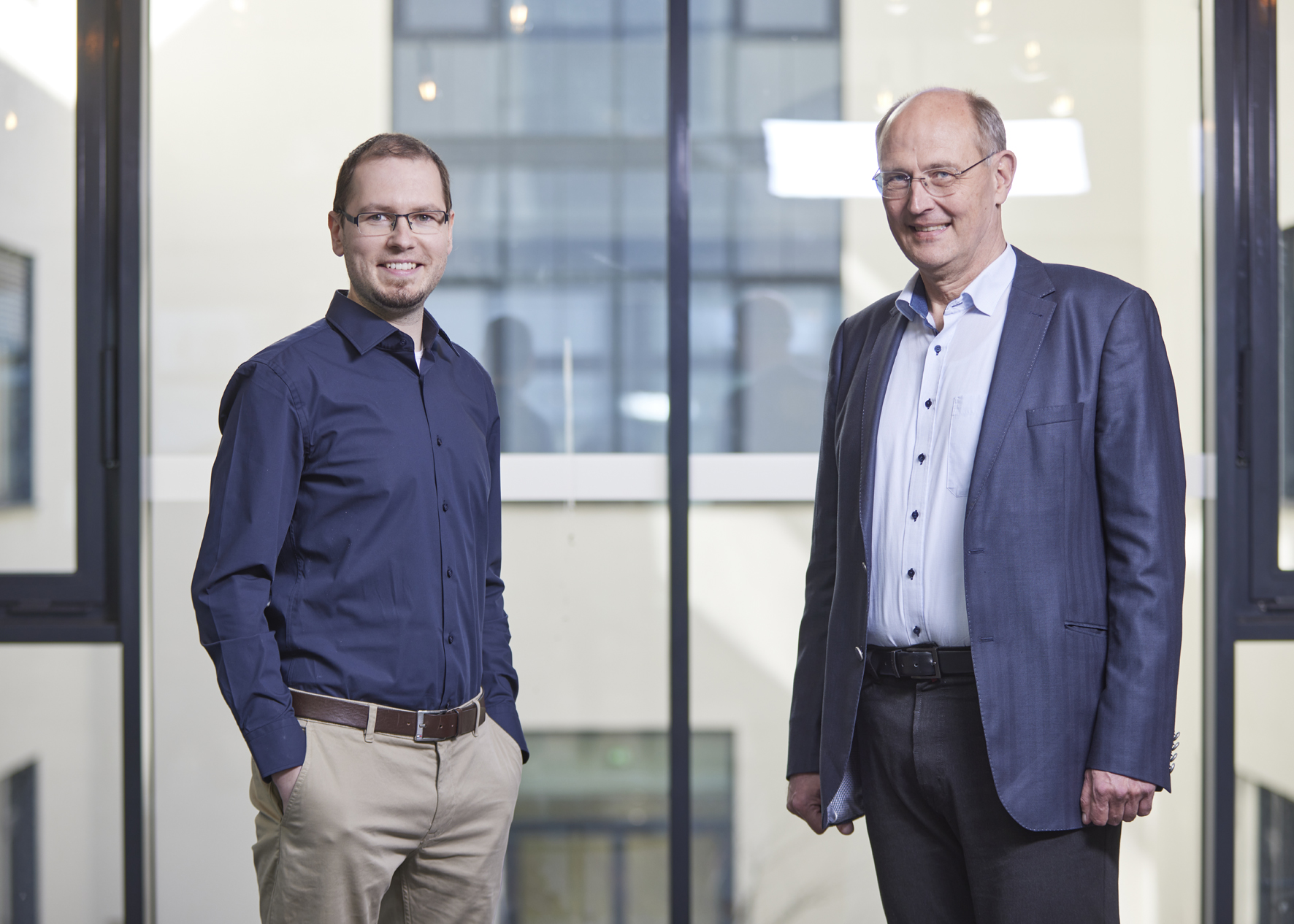Joseph von Fraunhofer Prize
A new precision method – fluorescence measurement technology for quality assurance in production
“Qualitative” and “quantitative” may be just a couple of letters apart, but the difference is huge. When it comes to fluorescence measurement technology, for example, it has so far been used almost exclusively for qualitative analyses. Now, for the first time, a team of researchers at Fraunhofer IPM is successfully using the method to obtain quantitative measurements with a high local resolution, and is receiving the Joseph von Fraunhofer Prize in recognition of this achievement.

Until now, fluorescence-based techniques have been seen as ways of obtaining estimates rather than as reliable quantitative measurement processes. Ultimately, calibrating the process requires not only precise references but also a profound understanding of the factors that influence fluorescent radiation. “We have succeeded in taking an imprecise process and developing it into a robust and extremely fast precision measurement method,” explains Dr. Albrecht Brandenburg of the Fraunhofer Institute for Physical Measurement Techniques IPM. It seems the world has been holding its breath for this. The technology is spreading both nationally and internationally at an astonishing pace, and sales in this area at Fraunhofer IPM are already in the millions. Dr. Albrecht Brandenburg and Dr. Alexander Blättermann have received the Joseph von Fraunhofer Prize for their achievement. The jury’s decision is based on its high technical performance and the economically quantifiable benefit to the businesses that use it.
Showing contamination in the production cycle
Another advantage is that the technology is inline-capable. “Complex 3D components can now be checked for contamination in production cycles mere seconds long – with one hundred percent accuracy,” says Brandenburg, who has been researching at Fraunhofer IPM for 30 years. It was his idea to use imaging fluorescence measurement technology to carry out checks on components – especially to detect contamination with oil or dirt. This information is particularly important in cases where safety is paramount, such as when bonding vehicle parts. To carry out the measurement, a shortwave violet laser beam scans the component’s surface and causes organic contaminants to give off long-wave light. This fluorescent light is captured by the laser scanner, converted into quantitative measurements and pieced together into an image. The process works for meter-long metal sheets as well as for small electronic components. “The performance data are spectacular: We are able to measure 40 million«
Global success
When asked for the secret of this success, Brandenburg answers: “To meet the industrial need for a new technology, it is crucial to establish customer contacts during the development process and build collaborations at a very early stage.” An early customer, for example, was Robert Bosch GmbH: “With the new Fraunhofer process, we can detect the smallest levels of contamination on surfaces and increase the quality, and therefore the safety, of adhesive bonds of electronic control units,” says Dr. Heiko Elsinger, process developer in the Bosch Automotive Electronics division. “That improves reliability, makes processes faster and ultimately helps to make production sustainable.” Other businesses seem to see things the same way as Robert Bosch GmbH: Since 2015, the team led by Brandenburg and Blättermann has raised around 3.5 million euros in industrial contracts from twenty customers in five countries. “I am signing quotes for different designs of fluorescence inspection devices virtually every week — for users in Germany and worldwide. This trend is rising sharply,” says Prof. Karsten Buse, Institute Director of Fraunhofer IPM.
Joseph von Fraunhofer Prize
| Since 1978, the Fraunhofer-Gesellschaft has awarded annual prizes to its employees for outstanding scientific achievements that solve practical problems. This year, three prizes were awarded, each worth 50,000 euros. The prizewinners also received a silver pin featuring the profile of Joseph von Fraunhofer. |